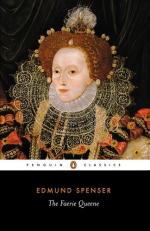2. INFLUENCE OF THE NEW LEARNING.—Like Milton, Gray, and other English poets, Spenser was a scholar familiar with the best in ancient and modern literature. As to Spenser’s specific indebtedness, though he owed much in incident and diction to Chaucer’s version of the Romance of the Rose and to Malory’s Morte d’Arthur, the great epic poets, Tasso and Ariosto, should be given first place. The resemblance of passages in the Faerie Queene to others in the Orlando Furioso and the Jerusalem Delivered is so striking that some have accused the English poet of paraphrasing and slavishly borrowing from the two Italians. Many of these parallels are pointed out in the notes. To this criticism, Mr. Saintsbury remarks: “Not, perhaps, till the Orlando has been carefully read, and read in the original, is Spenser’s real greatness understood. He has often, and evidently of purpose, challenged comparison; but in every instance it will be found that his beauties are emphatically his own. He has followed Ariosto only as Vergil has followed Homer, and much less slavishly.”
The influence of the New Learning is clearly evident in Spenser’s use of classical mythology. Greek myths are placed side by side with Christian imagery and legends. Like Dante, the poet did not consider the Hellenic doctrine of sensuous beauty to be antagonistic to the truths of religion. There is sometimes an incongruous confusion of classicism and mediaevalism, as when a magician is seen in the house of Morpheus, and a sorcerer goes to the realm of Pluto. Spenser was guided by a higher and truer sense of beauty than the classical purists know.
A very attractive element of his classicism is his worship of beauty. The Greek conception of beauty included two forms—the sensuous and the spiritual. So richly colored and voluptuous are his descriptions that he has been called the painters’ poet, “the Rubens,” and “the Raphael of the poets.” As with Plato, Spenser’s idea of the spiritually beautiful includes the true and the good. Sensuous beauty is seen in the forms of external nature, like the morning mist and sunshine, the rose gardens, the green elders, and the quiet streams. His ideal of perfect sensuous and spiritual beauty combined is found in womanhood. Such a one is Una, the dream of the poet’s young manhood, and we recognize in her one whose soul is as fair as her face—an idealized type of a woman in real life who calls forth all our love and reverence.




